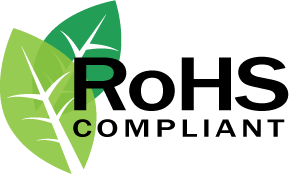Vishay Semiconductor Opto Division TSOP31238
TSOP31238
-

6823416-TSOP31238
VISHAY SEMICONDUCTOR TSOP31238 Infrared Receiver, Remote Control, 38 kHz, 45m, 45 , 2.7 V, 5.5 V, 450 A
- Factory Lead Time12 Weeks
- Contact Plating
Contact plating (finish) provides corrosion protection for base metals and optimizes the mechanical and electrical properties of the contact interfaces.
Tin - MountPCB, Through Hole
- Mounting TypeThrough Hole
- Number of Pins3
- Operating Temperature
The operating temperature is the range of ambient temperature within which a power supply, or any other electrical equipment, operate in. This ranges from a minimum operating temperature, to a peak or maximum operating temperature, outside which, the power supply may fail.
-25°C~85°C TA - Packaging
Semiconductor package is a carrier / shell used to contain and cover one or more semiconductor components or integrated circuits. The material of the shell can be metal, plastic, glass or ceramic.
Tube - Published2007
- Part Status
Parts can have many statuses as they progress through the configuration, analysis, review, and approval stages.
Active - Moisture Sensitivity Level (MSL)1 (Unlimited)
- Max Operating Temperature
The Maximum Operating Temperature is the maximum body temperature at which the thermistor is designed to operate for extended periods of time with acceptable stability of its electrical characteristics.
85°C - Min Operating Temperature-25°C
- Max Power Dissipation
The maximum power that the MOSFET can dissipate continuously under the specified thermal conditions.
10mW - Voltage - Supply2.5V~5.5V
- OrientationSide View
- Frequency36kHz
- Operating Supply Voltage
The voltage level by which an electrical system is designated and to which certain operating characteristics of the system are related.
1.7V - Max Supply Voltage
In general, the absolute maximum common-mode voltage is VEE-0.3V and VCC+0.3V, but for products without a protection element at the VCC side, voltages up to the absolute maximum rated supply voltage (i.e. VEE+36V) can be supplied, regardless of supply voltage.
5.5V - Min Supply Voltage
The minimum supply voltage (V min ) is explored for sequential logic circuits by statistically simulating the impact of within-die process variations and gate-dielectric soft breakdown on data retention and hold time.
2.5V - Operating Supply Current350μA
- Nominal Supply Current
Nominal current is the same as the rated current. It is the current drawn by the motor while delivering rated mechanical output at its shaft.
450μA - Power Dissipation
the process by which an electronic or electrical device produces heat (energy loss or waste) as an undesirable derivative of its primary action.
10mW - Output Current
The rated output current is the maximum load current that a power supply can provide at a specified ambient temperature. A power supply can never provide more current that it's rated output current unless there is a fault, such as short circuit at the load.
5mA - Viewing Angle
the angle at which a display can be viewed with acceptable visual performance.
45 ° - Forward Current
Current which flows upon application of forward voltage.
3mA - Current - Supply350μA
- Min Output Voltage100mV
- Sensing Distance
It is the sensing range for which the sensor can stably detect the standard sensing object even if there is an ambient temperature drift and/or supply voltage fluctuation. (Normally, it is 70 to 80 % of the maximum operation distance.)
45m - Wavelength950 nm
- Peak Wavelength950 nm
- B.P.F. Center Frequency38.0kHz
- Height12.5mm
- Length10mm
- Width5.8mm
- REACH SVHCUnknown
- Radiation Hardening
Radiation hardening is the process of making electronic components and circuits resistant to damage or malfunction caused by high levels of ionizing radiation, especially for environments in outer space (especially beyond the low Earth orbit), around nuclear reactors and particle accelerators, or during nuclear accidents or nuclear warfare.
No - RoHS Status
RoHS means “Restriction of Certain Hazardous Substances” in the “Hazardous Substances Directive” in electrical and electronic equipment.
ROHS3 Compliant - Lead FreeLead Free
- Datasheets :
- RohsStatement :









